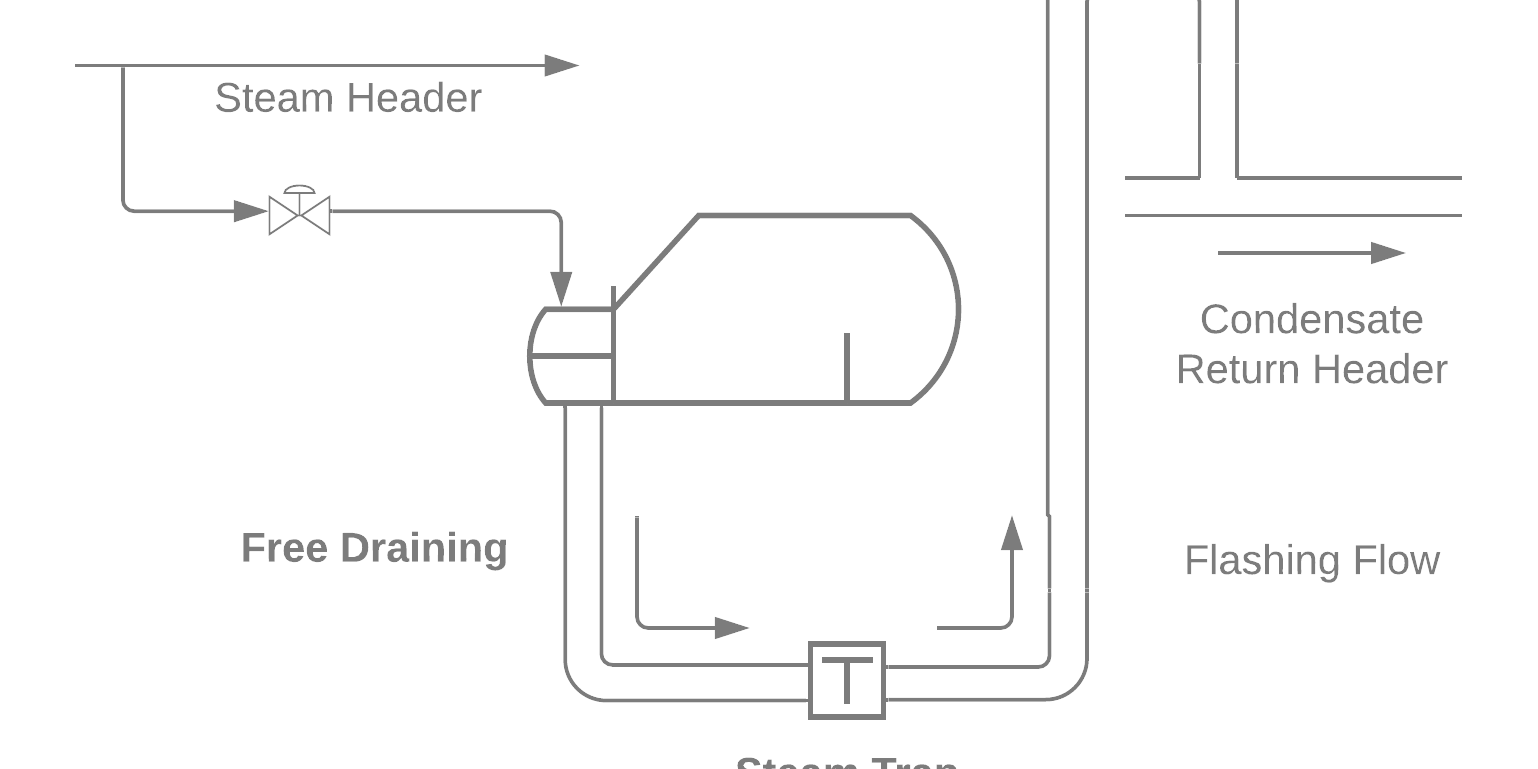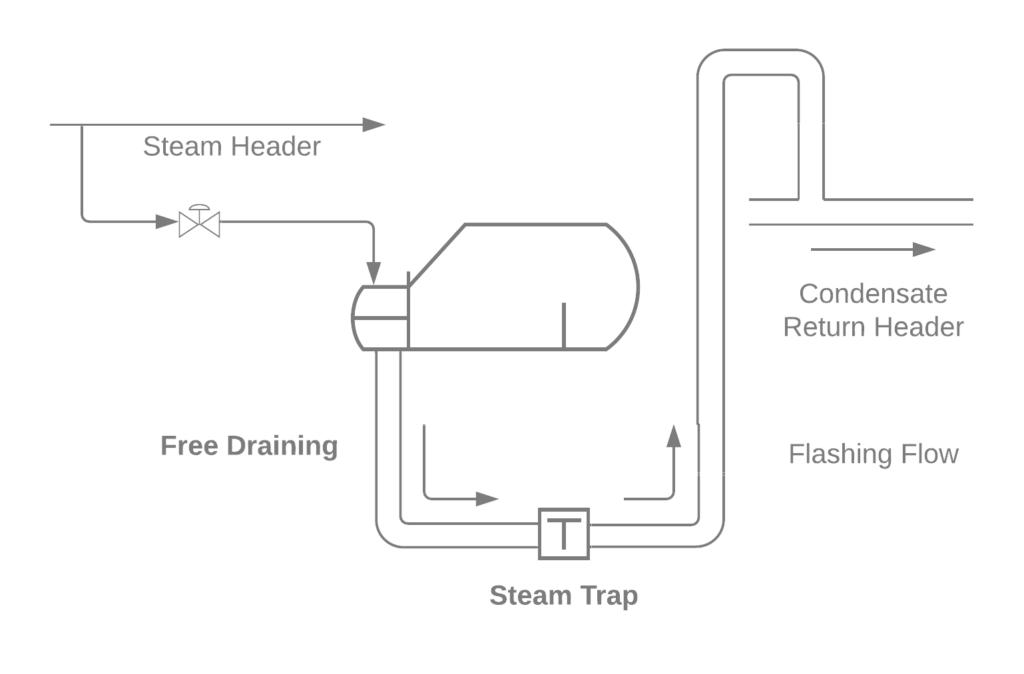Steam traps are everywhere on steam systems. We find them on headers to remove water during startup, and on heat exchanger drain nozzles as a simple control method to remove condensate.
Whether the trap is thermostatic, a bucket, or even a lowly orifice, we need to give some thought to line sizing. For the outlet piping, we use the rated capacity of the trap flow rate, apply a capacity margin for that style, and then apply a sizing criteria for the erosional velocity of the two phase fluid, or the frictional pressure drop. But, what criteria should we use for the inlet piping? [mathjax]
The inlet piping must be free draining, and perform two functions:
- Permit water to drain downwards by gravity.
- Permit any vapour in the line to be displaced upwards.
These two functions are different from the standard hydraulic requirements for erosional velocity or frictional pressure drop. Fortunately, there is a good body of practice to provide guidance. We just need to look at a different application: side draws for distillation towers. The side draw for a distillation tower must also be free draining. There is always vapour in the side draw line, and the vapour must not prevent the liquid from draining from the tray.We need to use the Froude number to describe gravity driven flow with an interface.
where v is the fluid velocity and d is the pipe diameter. For a free draining flow, it is customary to size the piping to ensure that Fr < 0.3. We need to do a bit of algebra to produce a useful design criteria for inlet line sizing. First,
But we also know that
thus
Or
d = 42.8 q1/5
where d is in mm and q is in m3/h.

Sizing figure for free draining flow
| Flowrate m3/h | ID, mm | ID, inch |
| 0.1 | 17.0 | 0.67 |
| 0.32 | 26.9 | 1.06 |
| 1.0 | 42.7 | 1.68 |
| 3.2 | 67.6 | 2.66 |
| 10 | 107 | 4.22 |
| 32 | 170 | 6.69 |
| 100 | 269 | 10.6 |
These line sizes may seem a bit larger that we would expect, but this is needed to prevent “vapour locking” the draining liquid. Since the inlet line for a steam trap should be kept as short as possible, the additional cost should not be onerous for a project.








